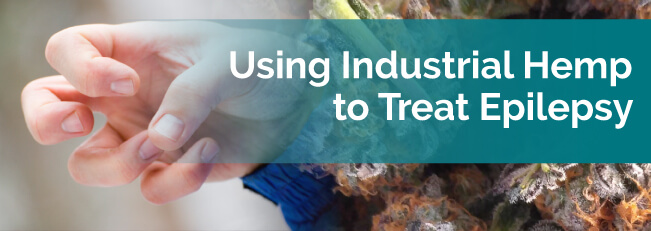
When people think of cannabis or marijuana, many believe there’s a single plant out there that produces “weed” and makes people high. However, cannabis is a multifaceted plant with many applications. There are tons of varieties of the cannabis plant. Industrial hemp, often just called hemp, is one of the oldest domesticated crops in the world.
Hemp is a variety of the cannabis sativa L plant. It has many different uses, one of which is as a medicinal oil. Hemp only has trace amounts of THC — less than one percent — and is completely non-psychoactive. Since it’s related to marijuana plants that are used as recreational drugs, both hemp and pot are lumped together and federally banned.
However, the usefulness of hemp shouldn’t be ignored. It contains cannabidiol (CBD), a compound found in cannabis with incredible medicinal properties. One such benefit is its ability to act as an anti-epileptic. If you have epilepsy, there’s more than just AEDs or surgical options. Why not consider industrial hemp as a treatment possibility?
The main difference between industrial hemp and medical marijuana is the presence of THC. Although these two varieties of cannabis are lumped together, marijuana has more THC, the compound that gets users high. Hemp has very little THC — if you attempted to smoke it, you would only get a migraine.
Not only do they look extremely different, but hemp and marijuana have different uses. Hemp is primarily used as a commercial product. Its stalks and seeds are used to produce:
In the 18th century and before it was federally banned, hemp was commonly used as a rotation crop. It’s highly valued for its ability to detoxify soil, leaving valuable nutrients that benefit all following crops. However, because of its capacity to detoxify, hemp can retain trace amounts of toxins.
When using industrial hemp for medicinal purposes, it’s important that you ensure that the plant is grown specifically to produce hemp oil. In many cases, it is a byproduct of hemp grown for other manufacturing purposes.
Although all hemp has trace amounts of CBD, industrial hemp is specifically grown to produce high-quality CBD oil. Cannabidiol is one of many compounds found in cannabis called cannabinoids. Research now shows our body also contains cannabinoids, which are a part of the endocannabinoid system.
The endocannabinoid system connects different parts of the body through a series of cannabinoid receptors. These receptors act as a bridge between our mind and body. When something is off with our health, our endocannabinoid system will also be off.
Seizures are caused by abnormal electrical activity in our brain. When things are working properly, the brain sends electrical signals throughout our body, controlling everything from movement to the function of different systems. Seizures disrupt the electrical signals, causing abnormal electrical impulses in the brain. CBD works with cannabinoid receptors to quiet these signals, allowing them to function properly.
Even though CBD works for patients with epilepsy, no one really knows why — that’s because industrial hemp is lumped in with medical marijuana and considered a Schedule I illegal substance by the federal government. This limits the amount of research that can be conducted.
As more people see the value of industrial hemp, they’re working to change legislation to legalize it. Not only would it have value for many different industries, from building to paper, but it would also allow more research to be conducted on the benefits of CBD. As our understanding grows, we may be able to pinpoint exactly how CBD helps patients with epilepsy.
For more information about how cannabis can be used to treat Epilepsy, check out our resources: